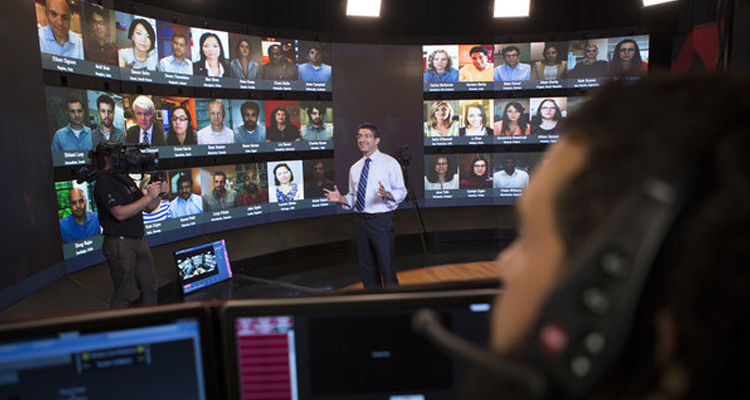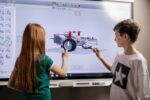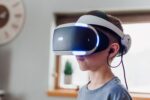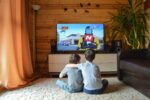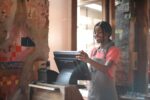Lights, camera . . . student interaction.
Anyone questioning the current impact, benefits, or the future of online education need look no further than Harvard University, where the newest high-tech classroom is really no classroom at all.
It’s a television studio, complete with a sleek sound stage, an upstairs control room, and a video team, headed by a producer who calls the shots from a variety of camera angles.
Sure, the professor remains the star, but the students are active participants in each real-life, real-time episode.
The technology is so impressive that National Public Radio (NPR) recently posed the question: Has Harvard Quashed Virtual Classroom Naysayers?
As class begins, the instructor is front and center. Everywhere he goes, he is trailed by a worker with a hand-held camera. Behind him towers a wall of students’ faces, reminiscent of the The Brady Bunch intro.
Those students comprise both the audience and supporting cast. Up to 60 students from around the globe can simultaneously tune in on their computers to be part of the unscripted, live, learning event.
Harvard Business School rents its studio from WGBH-TV in Boston, a public broadcasting outlet which has long provided classes and instruction on TV—everything from science experiments and foreign language instruction for kids to Julia Child, the “French Chef,” when she was only available in grainy black and white.
Fifty-some years later, it’s another world. The nature of Harvard’s production—part of a project known as HBX Live—meshes a futuristic feel with a very “now” time element. In fact, these are not class sessions designed to be recorded for future consumption. These are for instructors teaching in the moment, answering a student’s question in real time or even generating an instant online poll.
Before launching its TV classroom, Harvard sent school officials to NBC’s sports studio in Stamford, Connecticut, to study how reality shows are produced. Harvard also hired a production crew to man the control room, where instant choices are made from dozens of camera shots.
Harvard Business School has long been known for its case method approach, a teaching technique that traditionally relies on face-to-face contact between students and professors. In a recent example, as the class debated the value of Uber in the world of urban transportation, students were, indeed face-to-face, even though one was a businessman in Australia and another a web developer in Arizona.
Business Professor Bharat Anand poses the question: “Big number or small number? . .. Is the company worth 50 billion dollars?”
When a student is called on to answer, that student’s face appears on screen. The pressure is on. Right, wrong, or debatable, the student’s response is captured with complete candor, sometimes adding a touch of comedy to the lesson.
Anand says that Harvard’s classroom studio replicates the intensity of a classroom—something which can be difficult to achieve in virtual learning situations.
“We’re trying to create a constant energy as well as feed off what the professor says, the project’s technical director Peter Shaffery told the Associated Press.
Students have said it’s the closest thing they’ve experienced to being in a classroom.
“There are some things we can do with technology which we couldn’t do in the physical classroom,” Anand told NPR.
One advantage for the professor is the chat ticker at the bottom of the screen, enabling the instructor and producer to evaluate student thoughts and comments in real time.
In addition to holding some 100 class sessions in the studio within the next year, Harvard intends to use HBX Live to host presentations when its business students travel around the world on global study trips. The university hasn’t revealed how much its new virtual classroom costs or how it plans to charge future viewers.
“It’s almost like we’re building an infrastructure,” Anand said, “and now we’ve just got to let the imagination run.”
Such imagination, in concert with ever-changing technology, will fuel the future of the classroom and online learning, in which K12 is already a recognized leader.
Featured Image – Courtesy of Harvard Business School
